Nod’s
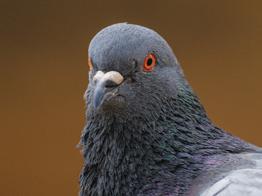
Saluting
Leanne’s



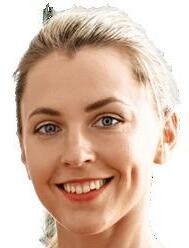
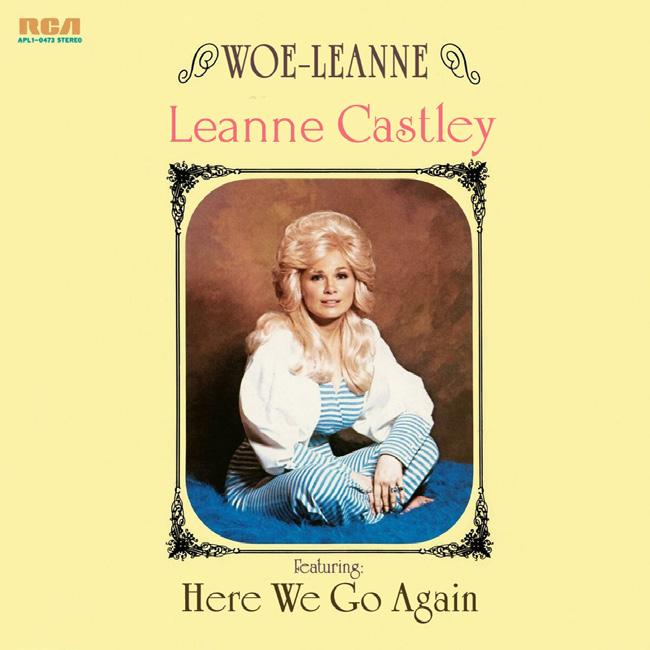




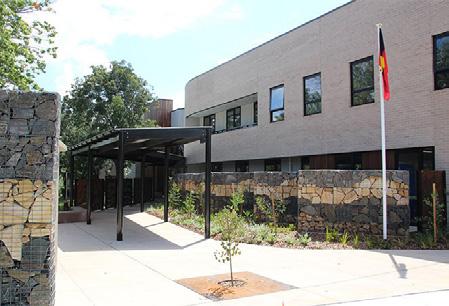
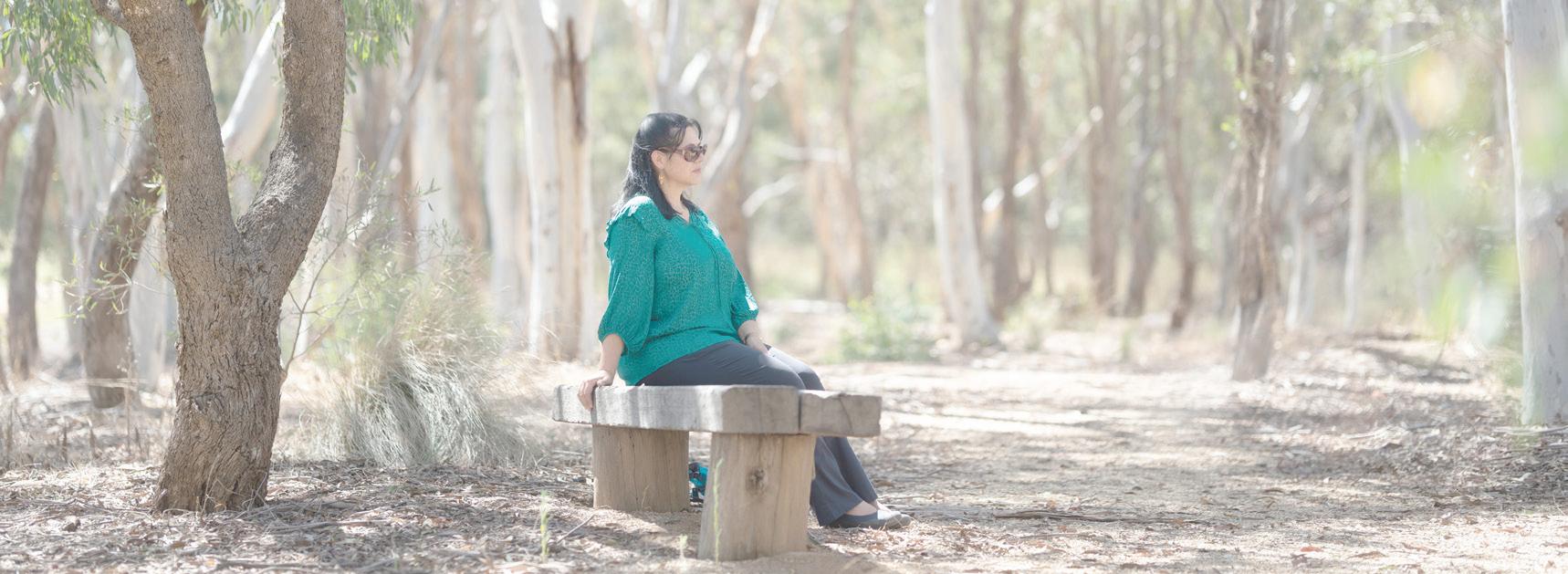
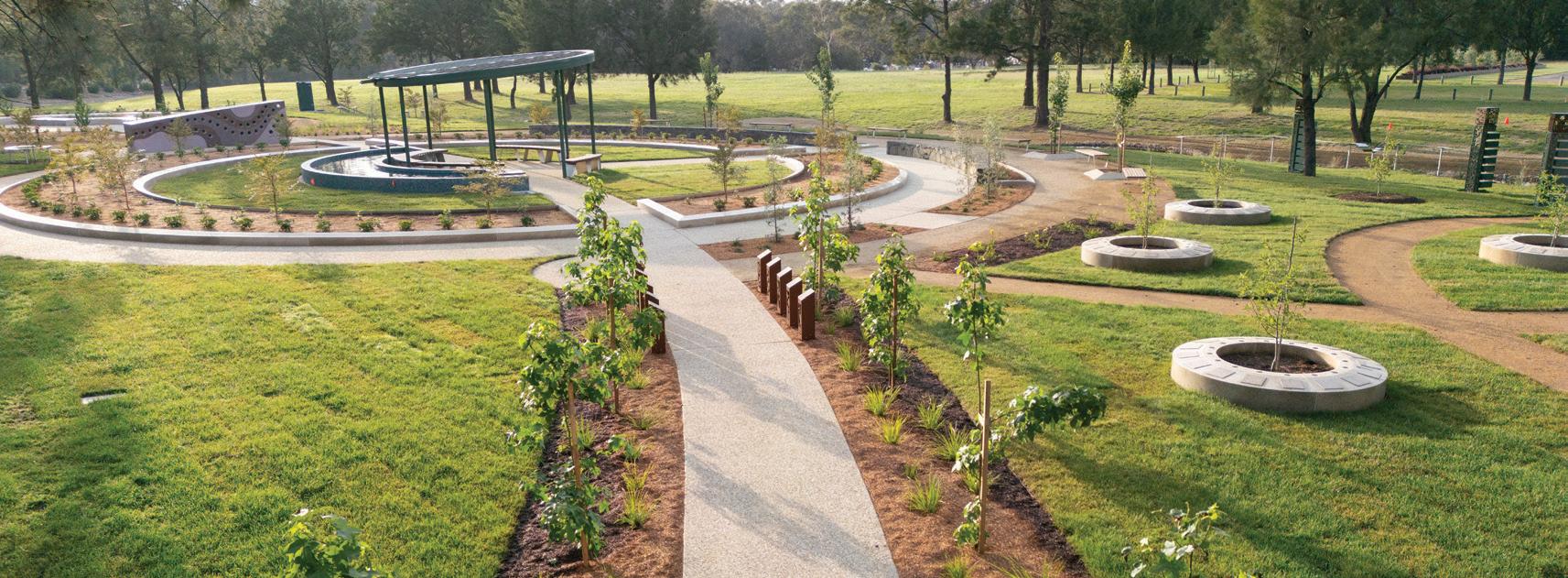
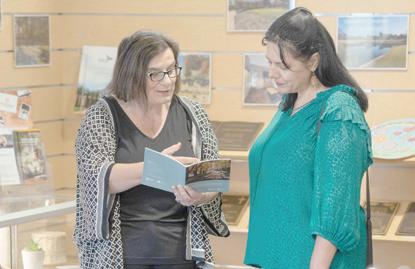
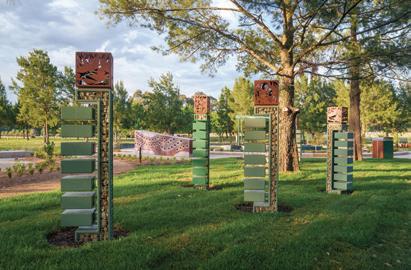
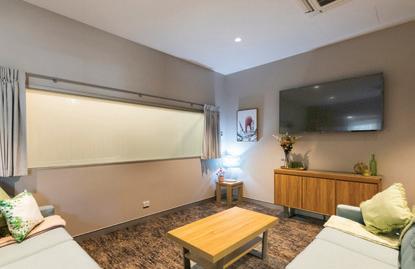
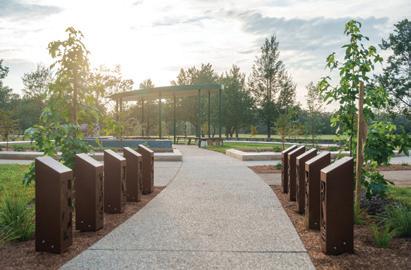
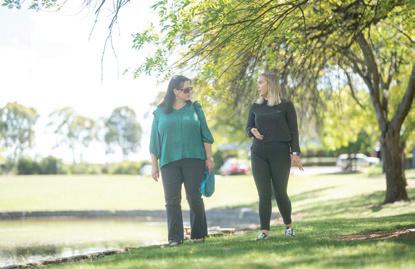


Nod’s

Saluting
Leanne’s




















Sanctuary Creek memorial garden is now open at Gungahlin Cemetery for families to consider as a final resting place for loved ones. Offering a peaceful and tranquil memorialisation space, Sanctuary Creek has various Canberra-specific artworks, as well as a delightful blend of native and introduced plants, specifically selected for Canberra’s climate.
The boutique memorial space hosts water features and a covered rotunda area that can be used to hold small memorial services. Contours of Mount Ainslie have been used on a niche wall with round interment spaces representing the many walking trails on the mountain. The gang-gang cockatoo, bluebell flower and Black Mountain are also featured in the area. Integrating modern and traditional materials and colours, Sanctuary Creek provides a truly special memorialisation space for honouring and remembering loved ones.
To make an appointment to explore Sanctuary Creek, or for more information, contact our friendly team on (02) 6207 0000 or visit the Canberra Memorial Parks website.
www.canberramemorialparks.act.gov.au


By Elizabeth KOVACS

Eight years ago, Olivia Nattey was in hospital recovering from spinal surgery.
Now the 21-year-old will represent Australia in the U23 rowing team at the World Junior Rowing Champion ships in Poland, July 23-27.
Qualifying for the national team at week-long trials in Sydney felt like a bit of a blur to Olivia, who says it was more anticlimactic than anything.
“I got to the end of the week of trials and was like… ‘is that it?’,” she says.
“It feels like it was more exciting for everyone else to see you succeed in something that you’ve wanted to do.



“You get through the week and you’re so tired because you’ve raced every single day for seven days after training all season and you kind-of just can’t wait to go to bed and have a sleep.”
George took the call at 5pm after Olivia was told she’d been selected to compete. “She called me up that afternoon and said: ‘Dad, I’m buggered, I made it and I’ll talk to you in a couple of days’.
“In the background, my wife and I, her grandparents, uncles, cousins and aunts were getting on to text messages and blowing her phone up.”
This was Olivia’s second time competing in the trials, an event that needs an invitation to attend.
“You spend the whole season racing at local regattas, waiting for an invite,” she says.
Although she was unsuccessful last
year, Olivia was still given the opportunity to row for Australia in Holland for the Australian Uni Team.
For Olivia, this was her “pinch-me” moment.
“It comes in waves,” she says. “It’s little steps along the way, the main [pinch-me moment] was when they
Since 1993: Volume 31, Number: 22

General manager: Tracey Avery, tracey@citynews.com.au
Senior advertising account executive: David Cusack, 0435 380656
Advertising account executives: Damien Klemke, 0439 139001 Ashika Nambiar, 0425 149860
Editor: Ian Meikle, editor@citynews.com.au
Journalist: Elizabeth Kovacs, elizabeth@citynews.com.au
Arts editor: Helen Musa, helen@citynews.com.au
Production manager: Janet Ewen
Distribution manager: Penny McCarroll





started referring to us as Team Australia, because when you’re on the start line, they don’t call you by your names, they call you by your country.”
Currently studying criminology at the University of Sydney, Olivia says she is grateful that the school’s EAP elite athlete program has ensured she can work her studies around rowing.
Although things are working out now, finding herself undergoing spinal surgery eight years ago was never
“I was 13 and dad looked at me weirdly one day and asked if I was standing on a bit of an angle,” says
Several appointments and hospital visits later and Olivia was sent home with a new back brace for scoliosis.
After six months, Olivia’s back hadn’t improved, with the angle get-
“In year nine, I went to Sydney, got surgery, spent a week in hospital and then was heavily sedated as I got out,” she says.
“Ever since, my back has had some titanium hardware in there.”
When Olivia’s scoliosis was first diagnosed, her back was at a 20 degree angle. By the time she had her surgery, it had bent to almost 40 degrees.
With a spine fusion from C5 (cervical spine) to T12 (thoracic spine), Oliva’s ability to row had to be changed to suit her needs.
“Ironically, after the surgery, they sent me off and told me not to play contact sports,” she says.
“So I said, ‘sweet, I won’t play rugby or AFL’.”
What had begun as rowing with friends after surgery turned into a passion. Although Olivia realised that she would never be a “sculling” rower (someone who uses two oars), after discovering she couldn’t row at all on her right side due to the scoliosis surgery.
“I have no thoracic rotation, but my arm span is really long, so I can get away with it on my left side,” she says.
As elite athletes, most rowers already favour a certain side, and Olivia says it hasn’t been too big of a problem.
For George, seeing his daughter stick to her guns and go for her dreams has made him “so damn proud”.
“We’ve gone from the tears and heartache of a parent seeing your daughter going through what she went through with scoliosis, right through to the joy and happiness of seeing her actually set her mind to something,” he says.
“It’s just amazing.”
With around-the-clock training hours and completing an undergraduate degree, Olivia struggles to find the time to balance work hours to fund her trip to Europe.
Donations to asf.org.au/campaigns/ olivia-nattey/u23-world-championships


After three years of pressure from non-government organisations, and intensive negotiations by member states of the World Health Organization (WHO), the world has largely adopted a plan to prepare for the next pandemic.
Lessons from the COVID-19 pan demic should still be at the forefront of the minds of those in power.
According to the WHO, there were more than 700 million reported cases of COVID-19 and seven million reported deaths. Better preparation will assist in reducing such casualties in a further pandemic.

This is the purpose of the World Health Organization Pandemic Agreement, aka the Pandemic Treaty. I was privileged to be in Geneva last month for the meeting of the World Health Assembly where the vote was taken. And even more privileged to be part of the advocacy work for the Pandemic Treaty through one of the key NGOs – the World Federation of Public Health Associations.
This agreement is only the second international legal agreement negotiated under Article 19 of the WHO constitution that seeks to encourage a co-ordinated approach to protect human health across the world.
(FCTC) that was adopted at the World Health Assembly in May 2003 with 168 signatories. The US signed, but still has not ratified the FCTC.
The Pandemic Treaty, according to the WHO, outlines “the principles, approaches, and tools for more effective international co-ordination across a wide range of areas”. Importantly, it seeks to ensure “equitable and timely access to vaccines, therapeutics and diagnostics”.
Negotiations on the Pandemic Treaty highlighted the distinction between those who focus on individual freedom compared to the huge numbers who seek to make decisions for the community good.
Iran, for example, took the view that
too much with national sovereignty and, like others, saw it as a “grab for power” by the United Nations.
No country voted against this international legislation. The vast majority of countries accept that viruses know no borders. The countries who abstained were Bulgaria, Egypt, Iran, Israel, Italy, Jamaica, the Netherlands, Paraguay, Poland, the Russian Federation and Slovakia.
The US representatives did not take part in the vote and cannot be considered part of the agreement. Apparently, not taking part in the vote is not considered abstaining. Internationally, it is just another example of being left in no-man’s land.
Was it a “grab for power” by the





I was privileged to be in Geneva last month for the meeting of the World Health Assembly where the vote on a global pandemic treaty was taken.
WHO (which is a body of the UN). The answer is simply no!
Rather it is an attempt for sensible countries to outline how they will work together for better health outcomes across the world when the next pandemic arrives.
The Pandemic Treaty “affirms the sovereignty of countries in addressing public health matters within their borders, noting that nothing in the draft agreement shall be interpreted as providing WHO any authority to direct, order, alter, or prescribe national laws or policies, or mandate states to take specific actions, such as ban or accept travellers, impose vaccination mandates or therapeutic or diagnostic measures, or implement lockdowns”.
According to the Director General of the WHO, Tedros Adhonam Ghebreyesus: “It is also a recognition
by the international community that our citizens, societies and economies must not be left vulnerable to again suffer losses like those endured during COVID-19”.
The Pandemic Treaty also means “pharmaceutical manufacturers participating in the Pathogen Access and Benefit-Sharing System will play a key role in equitable and timely access to pandemic-related health products by making available to WHO “rapid access targeting 20 per cent of their real time production of safe, quality and effective vaccines, therapeutics, and diagnostics for the pathogen causing the pandemic emergency”.
In a time of such turmoil in the world, it is heartening to see so many countries willing to work together to improve human health.
Michael Moore is a former member of the ACT Legislative Assembly and an independent minister for health. He is a past president of the World Federation of Public Health Associations.

A woman came into my clinic for a consultation about her hearing aids, telling me her hearing aids were 4 years old and she had never found them to be of much help. She said the salesperson quoted her $14,000 for a pair of hearing aids, however, the monthly special of 20% discount meant they cost her $11,200. So, she ‘only’ paid $11,200 for hearing aids that did not help her. Sadly, I hear this all too often.
Here are some things to do to avoid this type of problem:
1. Visit your GP. If you or someone you know has a problem with their hearing, visiting your GP to check for wax in the ears, and to get advice is a starting point.
2. Qualifications. Always check the qualifications of the person you are dealing with. A person without professional qualifications has no business advising you about your hearing. They need to belong to a professional association with a Code of Conduct, so you know they are acting in your best interests, not their own.
years. If you are not sure about their advice, then seek a second opinion. The wrong hearing aids can be an expensive waste and could lead you to stop wearing them. You should always have a trial of hearing aids to ensure that they are right for you.
6 Pensioners and eligible DVA card holders often have entitlement to free services. If you are covered by a government concession, then let the clinician know (even though your clinician should ask). Eligible clients may obtain free hearing tests, consultations, and free hearing aids (referred to as fully subsidized hearing aids).
“A person without professional qualifications has no business advising you about your hearing. They need to belong to a professional association with a Code of Conduct, so you know they are acting in your best interests, not their own.”
– Dr Vass
These hearing aids are appropriate for many people, however if you have great difficulty hearing in background noise (for example a restaurant), then you may want to consider partially subsidized hearing aids. This is when the government pays a certain amount, and you pay for additional features and benefits. Your decision should be based on the following:
you are dealing with a qualified clinician, then they belong to a professional association. The best contact is an independent complaints body referred to as Ethics Review Committee. You can email ethics@auderc.org.au and view the website www.auderc.org.au. You can make an anonymous complaint and your complaint will be handled in a confidential and professional manner. If you are in the ACT, contact the ACT Human Rights Commission email human rights@act.gov au and the website www.hrc.act.gov.au
3. Independent advice. You should get independent, professional advice.
4. There are a wide range of hearing aids out there. Finding the right hearing aids for your communication needs can be challenging. Hearing aids vary in price and performance. Bluetooth® connectivity and rechargeable hearing aids are available on most hearing aids, along with apps that allow you to control your hearing aids from your mobile device. Be aware that just because a hearing aid is more expensive, that doesn’t mean they are the best hearing aid for you.
5. Just as hearing aids vary in performance, clinicians may also vary in performance due to training, experience, and skills. Make sure that you are comfortable and confident in their advice. You are likely to be with this clinician for the life of your new hearing aids, typically 4 to 5
(a) Can you afford the more expensive hearing aids? Don’t go into financial stress if you can’t afford them. (b) Are you clear on the free vs partially subsidized features & benefits? Never believe someone who tells you the free hearings are not good or of poor performance, this is simply not true. (c) If you try the partially subsidized hearing aids and are not happy, then return them. Do not keep hearing aids because you think the failure is yours or that you will improve over time. If the hearing aids are not working for you in the trial period, then they will not work for you in a year or two.
7. If you have a complaint, then seek help. Your clinician should be able to help you through most of your needs. Sometimes, a problem may be beyond the expertise of even the best clinician. However, if you have a complaint there are things you can do. If


When glancing across the faces of the new Albanese ministry, you’d be forgiven if you couldn’t name the minister for the arts.
The answer is Tony Burke, quite a senior Labor figure, and so it should be since the arts and creative industries are a significant part of Australia’s economy.
In 2022–23, for example, cultural and creative activity contributed $63.7 billion, some 2.5 per cent of Austral ia’s GDP. Over the last 15 years, the sector has grown by 62 per cent. The performing arts alone saw its GDP contribution rise from $1.5 billion in 2008-09 to $2.4 billion in 2022-23. The arts employed 282,000 workers in cultural and creative industries in 2021 and more than 300,000 today.
But here’s just one of the problems. Minister Burke is more broadly Min ister for Home Affairs and Minister for Immigration and Citizenship and that’s a fulltime job for anyone.
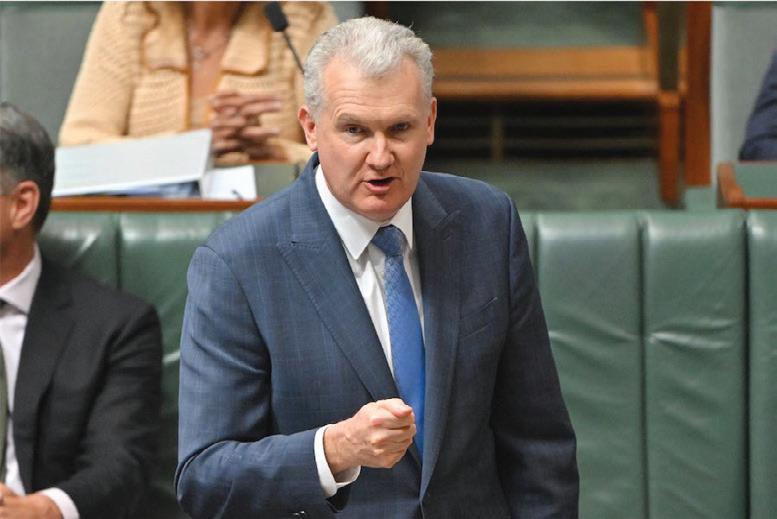
But wait, there’s more. He is also Minister for Cyber Security, one of the key elements in Australia’s defensive profile. That’s a job for two people.
And yes, there’s more. He is also the Leader of the House and thereby responsible for getting the legislative program of the government through the House of Reps, and running
ministers for Immigration and Emergency Management, but none for the Arts. That’s Tony’s portfolio and he’s sticking to it.
If you think it doesn’t leave much time for listening to the cries of artists, authors, screenwriters and poets scratching a living in their attics and studios as the Whitlam years of financial assistance fade to
by a gibbering bureaucrat or the AI equivalent.
It’s called “Revive” which evokes an (appropriate) image of a surfing rescue with Tony giving Aphrodite mouth-to-mouth resuscitation on the sand.
No such luck. Revive calls it, “a place for every story, a story for every place”. Honestly, you couldn’t make

Arts Minister Tony Burke is more broadly Minister for Home Affairs and Minister for Immigration and Citizenship and that’s a fulltime job for anyone. But wait, there’s more…
this stuff up. It continues: “Pillars and Principles – Revive is structured around five interconnected pillars which set out the government’s strategic objectives.”[Erk!]
First Nations First: Recognising and respecting the crucial place of First Nations stories at the centre of Australia’s arts and culture. [Really?]
A place for every story: Reflecting the breadth of our stories and the contribution of all Australians as the creators of culture
Centrality of the Artist: Supporting the artist as worker and celebrating artists as creators. [Really?]
4. Strong cultural Infrastructure: Providing support across the spectrum
5. Engaging the audience:
Making sure our stories connect with people at home and abroad. [How?]
It then goes on interminably (and equally vapidly) about “Principles”, “Key Measures”, and a somewhat scary $199 million over four years to provide “greater strategic oversight” across the sector, and five more pages of pap.
However, I’m happy to report that among them, by 2025 Writers Australia will be established within Creative Australia, to provide direct support to the literature sector, including for writers and publishers [?], to grow local and international audiences for Australian books and establish a National Poet Laureate for Australia.” (If only they included a red editor’s pen for bureaucrats!) Anyway, no sign of it yet. I guess Tony’s been a bit busy.
robert@robert macklin.com

When he was nearly 13, my brother Jem got his arm badly broken at the elbow. Sounds familiar?
Yes, it’s the opening line of the classic Tequila Mocking bird, a newly controversial 1960 novel by Harper Lee we all had to read at school.
One of the people who hated the book was my friend Norm, nearly 15 from memory, who had badly injured something – his back or leg or some such. We were boys and were really not caring about details like that so I remember so little about the injury.

What I do remember is this. Norm was a tremendous sporting talent – his dad had played footy for Australia and his own body movements while running or kicking or passing were graceful like Nureyev.


As he held you face down in the country town mud, you could not help but marvel at the economy of movement, the preservation of energy for the next time Thistle Park’s finest would need to perfect the squirrel grip, the nut sundae or the wedding tackle, before hastily listening to the bell and going to a year 9 English
class after lunch. Halcyon days.
Norm’s injury did not recover for many years, and his school career was punctuated by frustration at not being able to do what he did best. I tried to help by being an incredibly crappy friend, and we’d play touch footy on the back oval with Andrew and Peter P every day, until year 10 arrived and we were able to move 30 metres further up the totem pole to a better piece of real estate. This made the falls less painful but the good-natured violence was no less vigorous.
Funny thing, violence. I copped a lot less of it than I could have because, wounded or not, stone-faced Norm was around. In those pre-gym days, he walked around like he had a watermelon under each arm, like the scariest playground teacher ever. Which is what he eventually became (I don’t know about scary – but a teacher). Andy and Pete needed his protection, too.
Andy was small and smart –a lightning rod for playground psychopaths. Pete had a funny name but in mitigation he did have a gift that helped
By Elizabeth KOVACS

“If you can sit in a chair, you can do chair yoga,” says exercise physiologist Holly Hazlewood.
Working with Arthritis ACT, the 41-year-old says she has meshed years of personal ex perience with yoga along with the exact sciences she learnt through her qualifications in exercise physiology and reha bilitation.
Developed by American Lakshmi Voelker, chair yoga has been an alternative to the traditional practice of yoga since 1982.

Chair yoga adapts traditional yoga poses for older people and others with physical challenges. As older adults have become more active, chair yoga has grown in popularity.
Also desk workers can squeeze in 15 minutes of chair yoga and many companies are reported to offer it as a way to cut down on stress and improve overall health.
People recovering from
surgery or injuries may not be ready to get down on a yoga mat, but they can stretch in a chair.
Working as an exercise physiologist at Arthritis ACT for almost a year, Holly says it was a natural progression to explore chair yoga for their clients.
Now running weekly chair yoga classes as well as tradi-
tional mat yoga, Holly says one of the hardest things about encouraging new clients is overcoming the assumption that yoga means bending into uncomfortable pretzel shapes.
“It’s such a gentle form of exercise,” she says.
“We don’t hold the poses for too long.”
Working with chronic illnesses, such as arthritis and
hypermobility issues, Holly has now seen clients aged 22 all the way up to those in their 90s participate.
“We are helping people keep their range of motion, making sure we are always working with what is a comfortable level for them,” she says.
Not only does Holly say chair yoga helps with centering and mindfulness, she says it has a
You meet a Great Person and unconsciously tug your forelock (wish I had one) and one day wake up and realise you’ve known great persons all your life.
him plenty – if a bully started giving him what was in those days called a chinese burn, he would expel some methane so instantaneously rancid that class would come to a memorable halt and Mr Stuart had to issue World War I gas masks brought back from the Somme.
This is patently untrue but believe me, it would have helped. Peter claimed that the shenanigans of his distal colon were in some way beyond his control, and consequent to any kind of twisting motion upon his person, and went so far as to demonstrate it to his tormentors, by squeezing his own arm in front of them and erupting his bum like my cousin Silvio’s Kawasaki ZI-R, complete with absent muffler and setting off fire alarms at Macksville High.
The dogs accompanied the
hastily assembled drug squad and Canine Officer Muttley had to go on stress leave at a special kennel in Nambucca, whereupon it was decided he could never work again, on account of permanent nasal damage.
But it wasn’t enough to protect Pete, and he needed Norm around just as much as the rest of us.
Why wasn’t Norm one of the bullies? He hated that book, was unacademic, frustrated and looking for something. He took no interest in my love of Beethoven and The Phantom. But for years he looked after us. Why? He was just a great person. Forty years later and I see that reality. You meet a Great Person and unconsciously tug your forelock (wish I had one) and one day wake up and realise you’ve known great persons
all your life.
People who lifted you, or who like Norm, were just and unconsciously kind and friendly, that made things worthwhile for those around him.
People get (rightly) celebrated for running into burning buildings and rescuing others. Norm was in agony half of the time and took on thugs when his life would have been easier if he’d joined them. He saved us plenty, my unreliable memory recalls. His bravery saved me and probably others. And he did it without poisoning an innocent police dog. He died young, because life is never fair, but he will never be forgotten.
Antonio Di Dio is a local GP, medical leader and nerd. There is more of his Kindness on citynews.

range of health benefits.
“Yoga has been around for centuries, but the physical benefits of participating have only recently been discovered,” she says.
Traditional yoga originated more than 5000 years ago in India. Many of the poses used today are also that old. It can be as much spiritual as physical, and that also goes for its chair descendant.
As well as improved balance and strength, Holly says chair yoga can improve metabolism, self-awareness of movement, immunity and lymphatic drainage, muscle joints and bone density, energy and can even improve low blood pressure.
“It’s a special thing to see physical changes in my clients,” she says.
“To have someone come up to you at the end of a class and tell you that they’ve been feeling better or the exercise has helped them, it’s a fulfilling thing.”
Chronic pain and conditions require ongoing maintenance, which is why Holly says yoga can play such an important role in daily routines.
“It can be discouraging not to be able to walk up stairs or
do simple tasks, that’s why we also provide mental health support to encourage our clients to continue coming and keep them motivated,” she says.
Yoga therapist and senior teacher Robyn Lewis has been teaching chair yoga and training people to teach chair yoga in Canberra for more than 10 years.
“It’s important to differentiate it from a seated exercise, because that’s not what chair yoga is,” she says.
“Chair yoga heightens the accessibility and inclusivity of the yoga practice.
“We are just working at moving the mat technique to something as stable as a chair.”
Teaching students as young as 12 and as old as 100, Robyn says chair yoga isn’t just for those with a physical limitation, such as chronic pain or weight gain, but can cater to those living with issues such as dementia.
“There has been a demand for chair yoga since I established my services in Canberra and even before,” she says.
“Being in a chair doesn’t limit the practice, it’s getting as much out of it as mat yoga would, but in a more supported way.”












In this second column, MIKE QUIRK explores the proposed residential zoning reforms to encourage the development of ‘missing middle’ dwellings – duplexes, dual occupancies, townhouses and low-rise apartments.
Since the early 1990s Canberra’s planning strategy has placed an increased emphasis on urban consolidation.
Up until 2018 when the consolidation share was increased to at least 70 per cent, the urban consolidation share of housing supply was around 50 per cent.
Most redevelopment dwellings have been apartments. Current zoning is seen as limiting the provision of “missing middle” dwellings (terraces, dual occupancies, townhouses and low-rise apartments) viewed as necessary to provide opportunities for households wishing to downsize and obtain housing in areas close to work and urban amenities, improve affordability and the utilisation of infrastructure.
In response, on May 20, the government released for comment a draft Amendment to the Territory Plan and a design guide with the aims of increasing the supply of such housing. The draft amendment changes what is allowed to be built in different residential zones. The changes in
RZ1 areas include the removal of minimum block sizes for additional dwellings, removing the 120 square metre limit on secondary dwellings, allowing block subdivisions, permitting townhouses, terraces and low-rise apartments to be built up to two storeys, reduced parking requirements; and block consolidation with a general limit of 2000 square metres.
Block consolidation, by providing the scope for improved internal layouts and the better integration of parking and protection of vegetation, may lead to developments that are more attractive to consumers and neighbours.
In other residential zones the main change proposed is the increase in the maximum height limits for multi-unit dwellings (In RZ2, three storeys+attic; in RZ3, four storeys; RZ4, six storeys and RZ 5, seven storeys).
Surprisingly, low-density development is permitted with height limits of two storeys for a secondary residence and three storeys for a single dwelling, despite these zones having high accessibility to services and facilities.
It is uncertain if the reforms will

The increase in redevelopment share to 70 per cent was determined without an adequate knowledge of the factors determining housing choice.
Unsurprisingly, the policy did not result in the desired provision of townhouses, dual occupancies and low-rise apartments.
will be an ongoing need for greenfields development.
Improved design, higher-quality construction and the use of design review panels providing independent expert advice to government on development applications could increase demand and aid community acceptability.
substantially increase supply and affordability.
Would the reforms be more effective than alternative strategies such as identifying areas where demand for housing is high and where spare infrastructure capacity exists or expanding the extent of RZ2 and RZ3 areas?
Could the proposed reforms result in a development pattern that is difficult to service?
While zoning has been a factor in the undersupply of housing, the recent failed dual occupancy RZ1 initiative highlights, policy needs to be grounded on high-quality analysis especially an understanding of development feasibility and of housing choice.


Unfortunately, the current review of the residential zones was not informed by a housing choices survey. A survey would have identified what design features (number of bedrooms, storage space, sound proofing, width of doors and hallways, orientation, access to open space, cost and provision of lifts and parking etcetera) are needed to make dwellings attractive to households of various ages, incomes, types; and what trade-offs households would make to occupy a medium-density dwelling in areas of high accessibility.
Survey information would have complemented advice from industry groups and professionals and informed the draft design guide. Its absence could hinder the effectiveness of the guides in improving outcomes, particularly for low to moderate-income households who have little option but to live in apartments.
Until medium-density dwellings can be an effective substitute, there
It is easy to overstate the infrastructure cost savings of consolidation (much depends on the capacity of infrastructure networks) and environmental benefits may be offset if redevelopment leads to the creation of heat islands, vegetation loss, congestion and increased parking blight from the reduction in parking requirements.
Zoning is one factor in the supply of housing. Other major determinants include underlying demand, cost of finance, labour and materials; design and construction quality; price, land values and the lower appreciation in values of higher-density dwellings when compared to detached houses.
It is easy to overestimate the potential benefits of the reforms. They are not a panacea. They will assist in increasing housing supply in established areas and possibly make a modest contribution to improving affordability.
Mike Quirk is a former NCDC and ACT government planner.
•
•
• Extensive experience in government super such as CSS and PSS.
• Centrelink advice and implementation.
• Is a redundancy right for you at this time?





For more than 80 years the Australian War Memorial has stood solemnly and symbolically at one end of Canberra’s key axis, with Parliament House appropriately at the other end.
The memorial has always been seen uninterrupted by any other structure and beautifully and peacefully having Mt Ainslie as its backdrop.
Well, no more!
Now, as a result of the new development, when viewed from Anzac Parade and Parliament House, it seems to have grown clearly visible wings!
These are a result of enclosing the space between the memorial building and the new large technology (and rather innocuously modern-looking) building at the rear of the memorial. This white structure interrupts the memorial’s interpretation and its relationship with Mt Ainslie, and this is a big shame!
Mark Dawes, via email
Concerned at seeing dead wildlife on Canberra’s roads, this year I started to record the number of dead kangaroos and wallabies that I have removed from the road or reported for pick up.
By mid-May, the number was already up to 15.
These animals have died due to car strikes on roads such as Caswell Drive, Gundaroo Drive and Gungahlin Drive.
The ACT government has neglected to require property developers to make allowances for wildlife, such as overpasses and wildlife corridors.
Neglecting to protect our unique wildlife is a failure of our duty of care to the creatures we share the planet with.
Rebecca Marks, via email
Every Australian should take seriously Tim Walshaw’s warning about unchecked money printing and borrowing (letters, CN May 22).
With gross national debt set to hit $1 trillion in 2025-26, Paul Keating’s warning of a “banana republic” may yet prove prophetic.
Australia’s recent slide to 102nd out of 133 in the Economic Complexity Index – the lowest among all OECD countries – paints a troubling picture.
It reveals an economy that is poorly diversified, heavily reliant on raw exports, encumbered with an over-heated housing market and an immigration policy designed to stave off recession.
Put simply, we’re spending beyond our means while being left behind globally. The current cost-of-living pressures and our declining standard of living are fast becoming the new “normal”.
Australia must embrace far-reaching

reform and diversification now – or face more painful adjustments in the near future.
Ryka Moore, Spence
Tim Walshaw’s letter (CN May 22) reminded me that about half a century ago a fellow student told me that one of the European countries had operated/was operating a taxation system that included an opportunity for taxpayers to direct some of the income tax they paid to publicly identified activities, which they personally supported.
Recently, the new mayor of Yass seemed to be suggesting something similar in respect of rates paid by landholders in the shire.
At levels of government above local government level, there are significant sources of revenue other than direct from the bank balances of residents.
Therefore, it might be reasonable to provide that all of the income tax payments made by individuals be made subject to allocation, on the basis of the wishes of the people making the payments.
The limiting of expenditure to the amount of income available, is consistent with how I used to think prudent economics worked. It also fulfils significant democratic principles, such as a link between taxation and representation.

destinations for the funding could be established, to which taxpayers could choose to suggest distribution of various parts of their tax payments.
The reliable secrecy of information submitted to the tax office, would provide each year a secret ballot voting opportunity on public spending priorities.
This could help to overcome the problem of party political agendas overriding the willingness and ability of the community to fund the private agendas of those groups and their backers.
Lawrie Nock, via email
Ray Peck (letters, CN May 22) quotes AEMO that “system needs can be met by a combination of synchronous inertia and synthetic inertia response on the power system”.
This indicates that AEMO is still unsure what can be achieved by synthetic inertia technology.
In any case, synthetic inertia technology will always bring serious vulnerability to our critical national infrastructure through various forms of cyber-attack.
John L Smith, Farrer
Blame Hare-Clark for the mess we’re in
Allowing as much as 5 per cent of a taxpayer’s contribution to be directed would mean that an extensive list of potential

Our Hare-Clark representational voting system needs to be retired to history.
This system should never have been given oxygen because it’s nonsense designed to get the drover’s dog into politics and is only beneficial to schemers. It’s time for a no-holds-barred debate. My belief is we should get rid of it, but others will oppose it as our government plunges further and deeper into chaos and debt. The unavoidable fact is it’s the root cause of our problems.
John Lawrence via email
It is interesting that many other correspondents (Rod Smith, William Ginn, letters, CN May 22) understand that intermittent, weather-dependent electricity is unsuitable for a modern economy. Unfortunately, the ideologues in government, including Minister Chris Bowen, remain oblivious to that.
And there are groupies at AEMO and CSIRO who jump on the gravy train to support this engineering foolhardiness.
Whilst beggars remain at every shopping centre entrance during the costof-living crisis, Australia does not need to spend money propping up the Chinese solar panel industry. Australia has domestic uranium resources to ensure a reliable electricity supply, which can use all the existing grid infrastructure at no extra cost.
Anthony
Horden, Jamison Centre
As a long-term Gordon resident and dog owner, I am seeking some clarity from Chief Minster Andrew Barr as to why a new dog park has mysteriously appeared in our suburb.
Most people in this area live in larger houses on larger blocks and hence have bigger dogs, which need more space to run and exercise.
The current dog park is perfect for this, while the new park, 10 times smaller, is clearly designed for “handbag dogs”.
Could Mr Barr explain what public consultation took place before this idiotic idea was approved and how much has it cost taxpayers?
Most importantly, what is going to happen to the old dog park? On this question and lacking answers from Mr Barr, I suggest the following two words: property development.
And could part of the deal be that, in exchange for this prime piece of real estate, views of the Brindabellas, short distance to the Murrumbidgee corridor, that a dog park will be built right alongside the tiny and hurriedly built apartments and townhouses where residents can exercise their tiny dogs?
Yes, Mr Barr, of course this is all just conjecture, so perhaps you would like to enlighten us with the truth, or will we have to wait again for yet another FOI?
Declan Mcgrath, Gordon
In response to Rod Smith (letters, CN May 22): it would seem that he is not keeping up with recent events.
Firstly, a substantial win for the ALP in the recent federal election saw the Liberal/Nationals exposed without serious policies. In particular, energy, renewables and the fantasy of nuclear power coming online in 2040!
Secondly, Rod bangs on about reliable coal and gas and raises the prospect of blackouts and the “ruination of what little manufacturing industry we have left”. Of course, he does not provide any evidence for this dramatic statement. Its sounds straight from Sky After Dark!
This week there was further mention of old coalfired power stations in NSW regularly going offline,
needing maintenance. Hardly reliable!
Rod goes on to say that there was no rational discussion by the Coalition about its nuclear policy; I wonder why?
Finally, he says that Labor continually lied using inflated costs from pro-renewables groups stacked with Labor stooges. I assume he is referring to the CSIRO and people such as Matt Kean, the former NSW Liberal treasurer?
When will people like Rod and his ilk catch up and look at the facts, evidence and reality?
John Sherborne, via email
Darryl Johnston reminds us of the high health costs of wood heaters (letters, CN May 29).
A Medical Journal of Australia article in 2023 showed that the estimated annual number of deaths in the ACT attributable to wood heater PM2.5 particulate pollution is similar to that attributed to the extreme smoke of the 2019–20 Black Summer bushfires.
I recall air purifiers became popular during the Black Summer bushfires to help cope with the smoke, but I notice in a large hardware store (you can guess), one can still buy air polluting wood heaters and also air purifiers. What a ludicrous situation!
The ACT often has relatively clean air, so why significantly pollute it in the cooler months with wood smoke from wood heaters? A minority of the population in both Canberra and Sydney (about 1 in 10 people) is responsible for the very large health costs. In Canberra the annual health cost is in the order of $100 million to $300 million (depending on severity of the winter), and in Greater Sydney the annual health cost linked to the use of wood heaters is estimated to be $2046 million.
There are clearly much better heating methods that enable the air to remain clean, which most people already use. Wood-based heating in urban environments should be a thing of the past by now.
Murray May, Cook
“Penguins mate for life. Which doesn’t exactly surprise me that much cause they all look alike – it’s not like they’re gonna meet a better-looking penguin someday.”
– Ellen DeGeneres
On the matter of birds, I was recently observing punk pigeons (Crested Pigeons) walking, and it seemed oddly uncomfortable for them to be moving their heads back and forth so rapidly.
Other walking birds, such as magpies, certainly don’t do it. But I discovered there’s a good reason why pigeons do it, which I’ll come back to.
Head movement extends to humans, too. Across human cultures, head move ments convey a wide variety of messages. For instance: in India, a sideways double “head wobble” signifies understanding, or acknowledgment, while a head tilt to the right side signifies acquiescence.
In most cultures a nod (up and down) typically signals agreement or affirmation while a head shake (side to side) commonly indicates disagreement or refusal.
However, in Bulgaria and some neigh bouring regions, a nod means “no” and a shake means “yes” – which is the opposite of the norm in most other cultures. This could clearly be dangerous for the unwary traveller.

In Japan, a slight bow of the head is a
In Malaysia it’s considered rude to point, so if you ask a Malay for directions, he or she will point their lips in the direction you need to go. In England, a quick jerk upward of the head towards the right
count of events. They show empathy by tilt ing the head up and down sympathetically or sideways to show horror or disbelief. (Often seen with the noddies behind politicians and emergency managers.) The human ability to use head move -

ments for nuanced communication is tied to our use of speech for social interaction. This contrasts with pigeons, whose head movements are largely functional or instinctive.
Anyway, to return to pigeons, they move their heads back and forth when they walk because of the way their vision works. It helps them maintain visual stability and focus on their surroundings.
Pigeons and similar birds have monocular vision, meaning each eye sees a separate field of view. Their eyes are positioned on the sides of their heads, giving them a wide field of vision but less depth perception.
The head bobbing compensates for this by keeping their eyes steady for short moments as their body moves forward. This steadiness allows them to better focus on objects and detect motion in their environment. It also enhances their ability to detect potential threats.
In summary, humans use head movements primarily for enhanced communication, in contrast to pigeons who do it mainly for vision stabilisation.
On a lighter note: A college wrestler is competing in a national championship match. His coach tells him: “Your opponent is undefeated. He has this hold that never fails him. It’s called the Double Pretzel Lock. Whatever you do, don’t let him get you in
the Double Pretzel Lock or you’re done-for.”
The match is progressing, and our hero is doing well. Just as his coach thinks he may have a chance there’s a whirlwind of movement and our guy is tied up in the Double Pretzel Lock. The coach is distraught, knowing the match is lost.
Suddenly, there’s a blood-curdling scream and the two wrestlers fly off the mat. Our wrestler lands on his previously undefeated opponent, pins him down and wins the match. There’s pandemonium in the arena. His coach yells: “That’s the most amazing thing I’ve ever seen! Unbelievable! How did you do that!?”
Our guy says: “Coach, there I was, almost completely unable to move, all twisted up in the Double Pretzel Lock. I knew I was done for and was about to give up when I saw this pair of testicles near my face… so I bit them.
“Coach, you’ll never know how high you can jump until you bite your own testicles.”
Clive Williams is a Canberra columnist.



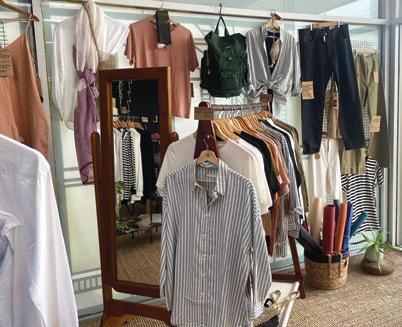


Turning a house into a home can be an exciting milestone for anyone, but it always makes sense to bring in professional help to get the best results. Whether it’s to update or repair an older home, adding personality or adding value through professionally guided improvements, here is a selection of skilled experts who can help take your home from drab to fab.
Showcasing expert electrical services,
Konnex Electrical owner Ozi Hempstead says they have more than 17 years of experience.
“From safety upgrades, switchboard replacements and gas electrical appliance conversions to energy-efficient lighting and home automation lighting solutions, we’re known for our commitment to safety, quality workmanship and genuine customer care,” says Ozi.
With safety and customer satisfaction at the heart of everything they do, Ozi says whether it’s a small repair or a large installation, they ensure transparent pricing, top-tier workmanship and exceptional service, every time.
“What sets us apart is our deep understanding of homeowners’ needs – whether it’s making homes safer, improving energy efficiency or future-proofing with smart technology,” she says.

Ozi says her team is passionate about safety innovations such as surge protection and switchboard updates to meet today’s electrical standards.
“Electrical work is often overlooked in renovations, but it’s a crucial part of making a home safe, efficient and future ready,” she says.

“With rising energy costs, we highlight energy-efficient solutions that help homeowners cut costs without sacrificing comfort.
“Come chat with our experienced team about their electrical needs, get free expert advice and book an obligation-free quote.”
Konnex Electrical. Contact info@konnexelectrical. com or call 0413 465 947.


“Come & view beautiful items for your home or business!”
Enquiries call Andre 0450 427 470 Wednesday to Sunday 10am - 5pm Shop 1A Hughes place, Hughes -just near the IGA




European Masters has opened its doors in Hughes.
“We are a premium home and decor store committed to providing affordable and beautiful items,” says owner Andre Vlcek.
Initially established in Melbourne in 2021 as an online-only store, Andre says he was inspired to begin his own business after struggling to find pieces to put in his new apartment with his partner.
“We wanted beautiful things to go in our brand new apartment,” he says.
“But everything was so expensive and we just weren’t satisfied with the wait times and their accompanying price, so we opened up our own place.
“We created European Masters to give every Australian business, interior designer and homemaker access to affordable home-decor
masterpieces, based on the designs we found.”

table lamps to framed artwork, Andre says they are proud to stock pieces that are beautiful and affordable, instantly elevating the look and value of a space.
“We don’t do cheap, we do affordable,” he says.
Also offering custom services, Andre says they can do pieces for businesses, including logos and designs.
“We can even do framed family or pet photos,” he says.
Specialising in reworked art, Andre says it is easy to take a piece of Dali or Van Gogh home.
European Masters. 1A Hughes Place, Hughes. Call 0450 427470 or visit european-masters. myshopify.com


At Konnex Electrical, we’re more than just electricians – we’re a small, family-owned business built on trust, expertise, and a commitment to our community.
With over 17 years of experience, we proudly serve Canberra and NSW, delivering reliable, high-quality electrical solutions tailored to your needs.
Safety and customer satisfaction are at the heart of everything we do. Whether it’s a small repair or a large installation, we ensure transparent pricing, top-tier workmanship, and exceptional service – every time.
When you choose Konnex Electrical, you’re choosing a team that treats your home or business like our own.

Home


Living Simply is Canberra’s go-to specialist for plant hire in venues and events, says director Graham Holbrook.
Offering plant rentals for pre-property sales, weddings and special events, Graham says adding a fresh touch of greenery can enhance any space and, with a track record of all houses they’ve styled selling, he says it’s a great way to improve a home before listing.
Already looking ahead to spring, Graham says they need to start clearing out their older plants to make room for their incoming stock.
“We are currently running a winter sale for up to 50 per cent off last season’s plants,” he says.
“These are potted plants that are more than 12
months old and are ready to go into the ground.”
With plants to suit balconies and courtyard’s, Graham says their true specialty lies in indoor plants, with a large collection available to rent.
Working closely with property stylists, Living Simply provides the full styling service on the day of the event, with the team meticulously caring for the plants before, during and after the event to ensure they look just right. Graham says they also provide a sourcing service for any plants they may not have in stock.
Living Simply. 10 Beltana Road, Pialligo. Call 6249 1552 or visit livingsimply.com.au
Offering a wide range of shower screens, sliding wardrobe doors, retractable screens, mirrors, splashback and an authorised Crimsafe licence, Monaro Screens general manager Ben Byatt says all pieces are custom made in their local warehouses.
“We pride ourselves in our commitment to premium products that come with a premium service,” he says.
“As a family owned and operated company, we value our clients and go out of our way to ensure they feel like they are being taken care of at every step of the way, and want each and every client to experience the Monaro difference.”
the team walks clients through options and advice, Ben also recommends customers visit their modern showroom to ensure they feel confident in their product choice.
“High-quality work is extremely important to our team,” he says.
“We have built a great brand within Canberra and the surrounding regions based on quality work and quality service.
“We like to ensure all of our products would be suitable in our homes and we would be happy with them before we offer them to the public.”
Ben says they treat their clients how they would like to be treated with their own home improve -



But this time...
5 0 % Selected Outdoor Plants

2 0 % Indoor Plants
1 0 % Storewide

Teddy Bear Magnolia + Little Gem
Cycas
Bonsai Japanese Maples


Devil's Ivy
Indoor Palms
Peace Lilies
Zanzibar Gem Plus plenty more........


Water Features
Outdoor Furniture
Indoor & Outdoor
Pots
Wall Art & Mirrors It’s on again....
1 0 B e lt a n a r o a d , P ia llig o P H - 6 2 4 9 1 5 5 2
With more than 25 years of experience in picking out furniture, Ex-Government Furniture co-owner James Fullerton says they continue to stock a large range of furniture from all prices and levels of quality.
“We get new furniture every week, so there is never a shortage of pieces,” he says.
With a recent move to their new loca tion at 26 Molonglo Mall in Fyshwick, just off the Shell service station roundabout, James says they have a large range of sale-priced furniture as they make room for incoming stock.
“Come grab a bargain,” says James.
Under the watchful eye of their “pats and snacks operations manager” Tilly, James and co-owner Taylor Radnell say their new move has seen a surge in storage options.
“We have a large range of metal storage units available and will have a huge selection of bookcases enter the store next week,” he says.
From entry level to top-level pieces, James says they have furniture spanning 100 years.
“We’ve got pieces from 1879 all the way to this year,” he says.
“It keeps it interesting to see the differ ent types of stock we have in store.”
Ex-Government Furniture, 26 Molonglo Mall, Fyshwick. Call 6280 6490 or visit exgovfurniture.com, facebook at exgovfur niture or on instagram at exgovfurniture

A long line of family experience in the industry has allowed Earth Moving Creations to develop innovative techniques that make construction projects less complex, said director Blake Scerri.
“Earthmoving Creations have over 150 years of combined experience in the local, civil and landscaping industry, so we can guarantee quality, reliability and professionalism,” he said.
“We are a passionate and motivated team that can help you with any job regardless of how big or
With services in bulk excavation, swift site clearing, detail excavation, civil construction, concreting and more, Blake said all jobs were run in order to provide the client with quality workmanship and ensure a safe standard.
Earth Moving Creations also had an expanding fleet of heavy earthmoving equipment available for hire.
“From truck and dog to excavator and bobcat hire we have something to help with your project,” said Blake.
“We also provide top-quality landscaping construction services at affordable prices.”
Blake said that Earth Moving Creations was dedicated to achieving the best results for clients, and carrying out thorough quality assessments at every stage of the process, from design input to execution.
Earth Moving Creations, Paterson Parade, Queanbeyan West. Call 5154 9999 or 0439 733044 or visit earthmovingcreations.com.au

•
• Bulk excavation
• Detail excavation
• Civil construction &
• Cleaning & removal

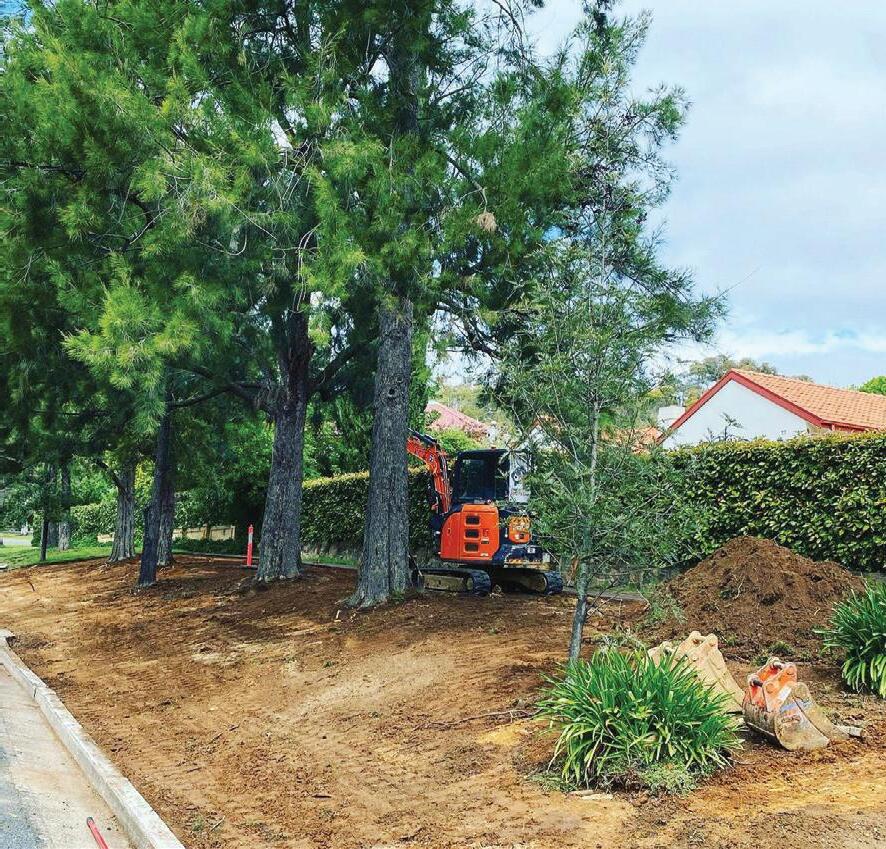
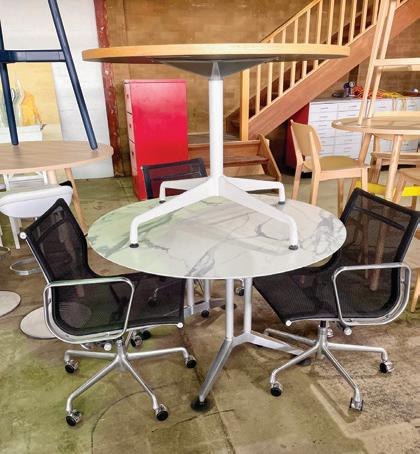









Helping homeowners transform their properties with high-quality renovations, Renovation Matters owner, Kim Persson, says they manage the process from start to finish, making it a smooth, efficient and stress-free process.
A trusted leader in “renovate-to-sell” projects, Kim and her team have helped more than 50 homeowners boost their sale price and have completed more than 100 successful renovations.
“We genuinely care about getting it right,” she says.
“We treat your home as if it were our own, com municate openly, pay our trades on time to ensure loyalty and high-quality work, and manage the entire operation with integrity, reliability and experience.
“We’re here to bring your vision to life, on time, on budget and with heart.”
Doing more than just renovations, Kim says they are with clients every step of the way, from planning and budgeting to the final reveal.
“We’ve built strong relationships with some of Canberra’s best trades and suppliers, ensuring you receive excellent relationships,” she says.
Kim says her favourite part is the transformation of a home.
“Whether it’s helping someone fall back in love with where they live or turning a tired property into a beautiful swan ready for sale, it’s incredibly rewarding,” she says.
“I genuinely love what I do and feel privileged to work with some of Canberra’s most skilled and dedicated tradespeople.
“When you choose us, you’re choosing a team that values quality, trust and heart.”
Renovation Matters. Call 0427 696662, or visit renovationmatters.com.au


In the realm of bathroom repairs, one size rarely fits all and Re-Seal Bathrooms understands this better than most, says business owner Brad McIntosh.
As a family-run business serving Canberra and Queanbeyan for more than 17 years, they offer tailored solutions that respect the challenges of each bathroom and the budget constraints of their
“We’re not here to push a full renovation when a simple fix will do, nor do we suggest a quick reseal when the problem runs deeper,” says Brad.
“Our goal is to provide honest assessments and effective solutions.”
Re-seal Bathrooms specialise in addressing common issues such as leaking showers, mould growth
both time and money.
Their services extend beyond simple repairs, Brad says Re-seal Bathrooms approaches each project with meticulous attention to detail.
“We understand that every bathroom has its own set of challenges and tailor our services accordingly,” he says.
In cases where matching existing tiles isn’t feasible, he says they offer practical alternatives.
Re-seal Bathrooms also offers a free on-site inspection service to determine the best solution for your bathroom.
“For those seeking reliable bathroom repair services that prioritise practicality and customer satisfaction, Re-seal Bathrooms stands out as a







“The kitchen really is the heart of the home and when you have a kitchen that is not only functional but is really beautiful to look at, it’s a great joy,” said Robyn Monteleone, partner at Select Custom Joinery.
Operating since 2000, Select Custom Joinery specialised in creating sustainable kitchens and joinery, she said.
“We are a niche business, we specialise in using timber and other solid materials,” she said. Their commitment went beyond just using sustainable materials though, and Robyn said they always thought about longevity, with everything they designed meant to last for a long time.
Robyn’s husband Gino Monteleone, the primary cabinet maker and partner of the business, trained as a furniture maker.
“He trained in high furniture, and building kitchens and things out of solid timber, it is in a sense creating pieces of furniture that people will love for many years to come,” she said.
“We aim to create things that are customised for each client’s lifestyle and personality and we often like to have a feature in each person’s home that is unique to them.
“The satisfaction that clients ultimately get something that really suits their lifestyle and them, and something they’re really proud of and really enjoy using is the most rewarding thing.
“We are only a small team, so it is by appointment.”
Select Custom Joinery. 1182 Wallaroo Road, Hall. Call 6230 9414 or visit selectcustomjoinery.com.au








ACT Carpet & Floor Cleaners services include carpet, tile and grout cleaning, flood restoration as well as upholstery cleaning and protection.
“We are one of the very few certified carpet cleaning companies in Canberra,” says director Frank Bartorilla.
“Doing the job well and making sure our customers are satisfied is our number one priority.
“We service all of the ACT as well as surrounding areas and pride ourselves on meeting important hygiene standards and providing a respectful service.”
Frank says he’s been in the industry for nine years.
ACT Carpet & Floor Cleaners has more than 150 five-star Google rated reviews and Frank says providing quality services to the community is a passion.
In promoting their services ACT Carpet & Floor
Cleaners gives out a bottle of stain remover and free top ups with every job.
“For carpet cleaning, people can go online and get an instant quote,” he says.
“They don’t have to ring us up or anything, they just need to provide the number of rooms they want cleaned, advise if it includes the hallways and the stairs etcetera and our online calculator will give you a quote, it’s simple and it’s accurate.”
Frank says their online booking is a quick and easy process to navigate.
“Our team is very accommodating to meet our customers’ needs,” he says. “Customer service is our number one priority.”
ACT Carpet & Floor Cleaners, call 0438 449999, or visit actcarpetcleaners.com







Upgrading or improving a home shouldn’t have to be an expensive adventure, says store-owner John Rivers.
“At Handyman’s Trading Post, people can find a great range of new, factory used and used parts, and pieces at half the price,” he says.
Now settling into their new location on Newcastle Street, Fyshwick, John says they are excited to again be providing affordable tools and items for homeimprovement projects.
“I recommend people have a rough idea of what they are after before they start searching,” he says.
“Planning ahead will allow us to cater to your needs.”
With a request service, John says it is easier than ever for their organisation to source quality pieces to fit any home.
“We can also buy old windows, doors and other materials off people, which can help with the overall budgets of their projects,” he says.
With a large range of doors and windows available, John says they have pieces that will elevate any space or provide a level of comfort and charm to newer places.
“For more than 42 years, Handyman’s Trading Post has supplied Canberrans with quality and affordable home and commercial building materials,” says John.
Handyman’s Trading Post. 167 Newcastle Street, Fyshwick, call 6280 4036. On facebook.com/p/ Handymans-Trading-Post or Instagram at htpcanberra
No two Canberra gardens are alike to Realityscapes Canberra owner Mitch Tilbrook.
Understanding the importance of reflecting individual style in a client’s garden, Mitch says he and his team work closely with clients to tailor their services at each location.
He ensures every garden is a well-maintained haven that resonates with the taste and lifestyle of its owner. And a thriving garden requires ongoing care.
“Our maintenance services cover everything from regular mowing, pruning and weeding, to seasonal adjustments,” he says.
“This ensures your garden remains a vibrant masterpiece throughout the year.”
“A great lawn can be the showpiece of your home,
and we treat it as such.”
Ultimately, Mitch says the goal is always to display fine craftsmanship, ensuring they have their client and community’s heart at the forefront of their work.
“Like the ‘one percenters’, I like to do the little things right by focusing on attention to detail and making sure the customer’s home and garden sparkles when we leave, making sure the little things like weeds and leaves or dirt are all removed,” he says.
“After all, your garden should be your happy place
“Most of all, you’ll receive service with a smile.”
Realityscapes is fully insured and has Working with Vulnerable People (WWVP) accreditation.
Realityscapes Canberra. Tench Street, Kingston. Call 0415 174 668 or visit realityscapes.com.au



TradeWise Renovations is a familyowned business in Canberra, boasts over 30 years of construction experience. We excel in collaborating with clients to achieve top-notch results, guiding them through every step of the renovation process from design to completion. Our expertise encompasses coordinating trusted tradespeople such as plumbers, electricians, plasterers, painters, tilers, and carpenters.










twinstitch.upholstery Like us on Facebook Call or email us today! 0422 073 665 61813511 toni@twinstitchupholstery.com.au





•
•




By Jackie WARBURTON

The last of autumn’s leaves have fallen, now winter’s jobs can begin.
Pruning of summer-flowering deciduous shrubs and small trees can be done any time up to spring.
Shrubs such as smoke bush, crepe myrtles and deciduous hibiscus that flower on new growth can be pruned harder than shrubs that flower on old wood. This gives maximum growth and flowers in the summer.
Shrubs that flower in the spring on old wood, such as forsythia, weigelias and philadelphus, should be pruned immediately after flower-
ing with a trim instead of a hack so there is no disturbance of flowering buds for the next season.
Once shrubs have lost their leaves they are in dormancy and won’t need fertiliser until there is spring growth and the soil has warmed.
WINTER is also the time for preparation of soil for spring and, most importantly, it’s time to get the gardens ready for rose planting.
Preparation is best done now for where new roses will go in the garden. The choices of roses suitable for our climate are endless.
In general, roses are a lowmaintenance, long-flowering choice for any space in the garden. If thorns are a deterrent, then there’s also thornless roses.
Turning over the soil and adding


a little blood and bone and cow manure to the area now will give the soil plenty of time to settle in before planting out in the next few months.
Although soil preparation is done now, pruning roses should be left until August or at least the beginning of spring. If pruned too early, the new growth will be burnt by frost and there will likely be loss of flowering buds for spring.
To keep aphids and scale at bay, spray existing roses with winter oil now as a dormant spray used in the cooler months, but only when the temperature is under 25C.
If sprayed in the warmer weather, it can burn the leaves and is not recommended.
For more about growing roses, the Friends of Old Parliament House Rose Gardens is having a high tea at the Mercure Hotel June 15.
I’m the president and will speak about the roses in the gardens, their significance to the history of Canberra leading up to the centenary celebrations of Old Parliament House in 2027.
Tickets are $55 via trybooking.com
NEW plants under plant
breeder’s rights (PBR) are noted on the label. They can be more expensive, but worth it as a small percentage of sales goes back to the breeder to produce more new varieties for the future. PBR plants cannot be propagated or sold without their label and Ozothamnus Pink Pearl or Rice Flower is one of them. It’s an upright branching shrub that grows to a metre tall with long, flowering aromatic stems. Pink Pearl is a new flowering variety, but Ozothamnus is also available in cream, yellow or red flowers. It likes to be grown in full sun and doesn’t need native potting mix to grow successfully.
jackwar@home.netspeed.com.au
• Reduce watering of indoor plants.
• Kiwi vines can be pruned once the leaves have fallen.
• Protect tap timers from the frost to prevent bursting.
• Liquid feed flowering shrubs and potted colour





Arts editor HELEN MUSA reports that 99 years after the birth of Italian-Australian architect Enrico Taglietti comes an exhibition unique to the nation’s capital.
Taglietti: Life in Design will follow the life and career of Enrico Taglietti and the collaborations with his wife Franca, aiming to identify him as a true “global” architect, one who called Canberra “the invisible city”.
Immediately recognisable for its unconventional sculptural shapes, Taglietti’s architecture shaped Canberra, seen in more than 40 projects across the ACT, including Giralang Primary School, the Center Cinema building and the Italian embassy.
His contributions were recognised with the Australian Institute of Architects Gold Medal in 2007 and an Order of Australia in 2020.
As well as original models from The Town House Motel and the Center Cinema, Canberra Museum + Gallery will show more than 60 architectural drawings and furniture designed by Taglietti, and sectional models of his structures by master of architecture students at the University of Canberra. Visitors will encounter “spatial interventions” designed by Italian architect Gianmatteo Romengalili and will be able to
create their own architectural forms in a re-created form of Taglietti’s studio.
When I catch up with Virginia Rigney, senior creator at CMAG, I find there has been a long gestation period for this exhibition, beginning almost seven years ago when she started there and was asked what shows she’d like to do.
She had immediately nominated one about the visionary Taglietti, who was to die in 2019.
“It’s been a journey and a labour of love,” she says. “Considering CMAG’s mission, he’s a perfect subject, someone with a local, national and international presence.”
It’s not easy to talk about architecture, Rigney says, even in Canberra, and it’s often sidelined, so that significant new buildings are often unveiled here without any refer ence to the architect.
“What was so incredible about Enrico was that and his wife Franca chose to make a life in Canberra in 1956 when they had the world at their feet,” she says.

War stories near and far, in fiction and of fact COLIN STEELE

sculptures, kitschy items such as a replica of Michelangelo’s David and, notably, a life-sized Milan bedroom.
“Enrico wanted the space to have real objects and a spiritual feeling,” Rigney says.
Arriving in Australia in 1955 was almost a second honeymoon for the globally curious Enrico and Franca, but what is little known is that as a boy he had spent 10 years in Asmara, Ethiopia, where his father worked in the family metal business. That meant he felt comfortable in Canberra, which had a similar space and light as opposed to what he called “the greyish tone of Milan”.
He saw this is a global city, saying:
“Canberra was such a non-conventional place, most probably because it was quite empty and that was the fascination of Canberra… together with the fact that a young fellow arriving from Italy could mix without any problem with a physics atomic energy scholar and with a prime minister.”
Rigney’s work has been buoyed by that of her exhibition co-curators, architectural historian Silvia Micheli from the University of Queensland and Tanja Taglietti, daughter
design the show.
Educated at the Politecnico di Milano,

For the exhibition in the main Sydney DJ’s art gallery, he brought over a fullsize gondola from Venice, Bernini glass
Together they invited Romengalili here in November. He knew Taglietti well, so once here, he distilled Enrico’s practice to seven design principles: Threshold/Gate; Framing the Landscape; Compression and Expansion; Growing from the Ground; Breaking the Edge; Dissolving the Façade, and Deceiving Gravity.
7 June 2025 – 22 February 2026
I ask Rigney to explain a couple of these.
Framing the Landscape means that with his design, you won’t find many conventional square or rectangular windows like 99 per cent of ours, but rather most of them are polyhedric – geometrically shaped.
“It’s not just a fancy thing,” Rigney says. “He realised that looking at a window from inside a house is something you’re going to do a lot of, so he structured the relationship between indoors and outdoors.
“In the house he designed for Prof Patterson in Aranda, he raised the windows to high-up in the kitchen where you can see a sliver of the landscape.
“We have created a polyhedric window shape hanging as a symbolic entrance to the exhibition. We hope the windows will invite you to be curious. Enrico wanted people to think differently.”
Compression and Expansion can be seen in the now repurposed Center Cinema in Civic, a heritage-listed building that has been painted over. It was the first cinema in Australia that had the screen underground, so that you effectively squeezed down a flight of stairs into a special experience in a big place, lit by blown-glass orbs, one of which will be on display.
“It gives you a sense of a spatial journey, gives you a release,” she says.
Taglietti: Life in Design, Canberra Museum and Gallery, June 7-February 22.
By Helen Musa
The CEO of Palace Cinemas and curator of the coming Spanish Film Festival, Benjamin Zeccola, has just emerged from an intense 14 days viewing (8am to midnight) and buying films at the Cannes Film Festival.
He’s there as part of an annual buying trip, where he accesses films for the Scandinavian, Spanish and Italian film festivals, and for general distribution in Australia. His curating work is long behind him for this year’s Spanish Film Festival, but it’s still very much in his mind, since he’s been buying for the next one.
“I try to pick a mood and set a note,” he says.
“Opening night means a fun thing,” he says, so this year they’ll kick off with an opening night comedy Samana Sunrise, which follows two Spanish couples celebrating their 20-year friendship with a trip to a beachside resort in the Dominican Republic, where the past surfaces to bite them.
When he then tells me that closing night will feature a remastering of the 2000 Argentine heist crime drama hit, Nine Queens, it becomes obvious that his festival really means not just Spain but the Hispanophone world, where Spanish is spoken, and in all there’ll be a selection of 30 films from Spain



and Latin America.
Zeccola himself speaks a bit of French, some Italian and better Spanish and says: “It’s one of the most successful languages in the world, it’s not hard to learn either and it sounds beautiful – I think it’s the most fun to speak.”
Spanish diaspora movies in this year’s line-up includes Mexican/US co-production Las Tres Sisters, an adventure comedy about three Mexican-American sisters who embark on an adventure to follow in the footsteps of their grandmother.




From Peru comes Through Rocks And Clouds, where an eight-year-old alpaca herder excitedly follows Peru’s World Cup chances, even as a mining company threatens his village and way of life in the remote Andes.
Uruguayan drama Milonga focuses on a woman who hopes to free herself from her past when she meets a man with whom she re-discovers her passion for tango, while the quirky thriller from Buenos Aires, El Jockey, tells the story of a jockey’s self-destructive behaviour which begins to outshine his talent.
Spain is still at the heart of the event, and the centrepiece of the festival is EL 47, which recently won five Goya Awards including the Best Film. Inspired by a true story, it’s a biographical drama that follows bus driver Manolo Vital in an act of peaceful dissidence that transformed modern Barcelona in the 1970s.
In marked contrast is the real-life drama I am Nevenka, inspired by the true case of Nevenka Fernández, a young woman in 1990s Spain who, ahead of her time, reported harassment by her employer.
The dramatic comedy Summer In
December sees four generations of women gathering in Madrid for a family reunion, while the equally dramatic thriller Electrophilia looks at a woman changed after being struck by lightning.
Most exciting of all will be The Flamenco Guitar of Yerai Cortés, winner of the Best Documentary and Best Original Song at this year’s Goya Awards, which features spectacular set pieces of flamenco.
The 2025 Spanish Film Festival, Palace Electric Cinemas, June 11-July 2.
Until now Kathryn Bigelow’s thriller film Zero Dark Thirty offered the most compelling on-screen account of the hunt for Osama Bin Laden.
But a new documentary now streaming on Netflix might have topped it.
American Manhunt: Osama Bin Laden is a three-episode series that dives deep into an extraordinary high-stakes search that unfolded in the wake of the September 11 attacks.
Meticulously made, it features interviews with former FBI officials as well as high-ups in the CIA and Department of Defense.

It’s peak Netflix doco-making, with all the glossy graphics and dramatic bass lines they can possibly cram in, but the quality is undeniable.
This is the third installment in the American Manhunt series, which in previous seasons has focused on the Boston Marathon bombing and the case of OJ Simpson. By far and away though, this new season proves the most fascinating and well made.
The third and final episode clocks in at just under 90 minutes, making it almost its own movie about the raid on Bin Laden’s compound some 10 years after the search first began.
NICOLE Kidman is back on streaming screens this month in her hit Amazon Prime Video series Nine Perfect Strangers.
It’s perhaps only Kidman’s name attached to the show that has allowed it to crawl its way to a second season some four years after its first.
Kidman plays Masha Dmitrichenko, an enigmatic wellness guru who hosts a retreat for rich guests who are in search of new purpose and want to become “changed people”.
But they soon learn their host’s methods of
“healing” prove far more sinister than what first meets the eye.
In an age where “wellness” has become such a fad, Nine Perfect Strangers has a hell of a premise, but watching season two I couldn’t help but feel it’s been beaten to the punch. Season three of The White Lotus, which streams on Max, satirised the trend far better earlier this year.
There are still several episodes of Nine Perfect Strangers that are yet to release, but the themes it’s trying to serve up just feel kind of stale now in comparison to what’s already been done. This is what happens when you leave four years between seasons in an age where consumers have such an endless choice of television. Someone else will get there first.
BOB Dylan is a legendary name but one that is perhaps widely lost on the modern generation. What better way then to bring them up to
speed than by casting Timothée Chalamet as the folk and rock music con.
He’s one of the most marketable actors in Hollywood right now (take his work in Dune, Wonka and Don’t Look Up as just a few examples) and he plays Dylan in the Oscar-nominated biopic A Complete Unknown which has recently hit Disney Plus.
The film charts Bob Dylan’s rise from a 19-yearold nobody with a guitar to an international sensation that changed the face of music forever.
Chalamet is as always totally committed.
As someone who’s only ever scratched the surface of Dylan’s discography, A Complete Unknown did enough to make me more interested in both his music and folk music more generally. That’s the ultimate compliment for a musical biopic, especially these days where they’ve become a dime a dozen.
In the last 10 years there have been films about Queen, Elton John, Whitney Houston, Elvis, Bob Marley and even more recently Robbie Williams as a CGI monkey.
A Complete Unknown is the latest to take a haul at the box office and Disney hasn’t missed a beat in getting on its streaming platform. It makes one wonder what Dylan, in all that reclusive aura of his, would make of an age where movies are watched the same way songs are listened to: on a vast digital catalogue accessed via a few taps on a screen.
The times they are a-changin’.


Book reviewer COLIN STEELE looks at two books with the common theme of war, one a fictional thriller, the other a factual account of an English city’s wartime work.
Charles Beaumont is the pseudonym of a former British MI6 intelligence officer.
His debut novel, A Spy Alone (2023), achieved critical and commercial success, with Beaumont’s main character, Simon Sharman, unmasking, at considerable personal danger, a Russian spy ring, originating in Oxford in the 1990s, and still operating in the present day.
in which elements of the Russian spy ring are still operating and propagating Russian disinformation to undermine Ukraine’s case both in Kyiv and London. Beaumont convincingly depicts the behind-the-scenes Westminster power battles, while delivering an indictment of Russian money and influence in London in recent decades.

Beaumont has said his second book, A Spy at War (Canelo, rrp $32.95), was written “about a year ago, but as the Ukraine situation evolves – including what I certainly regard as a betrayal of Ukraine by the United States and Donald Trump and his people… it’s something which I anticipated in the book to some extent”.
The novel begins in August 2022 with Sharman setting out to avenge the murder of his colleague Evie by a Chechen fighter in Prague, which takes him into war-torn Ukraine and ultimately the frontline and the special operations around Bakhmut.
Beaumont develops a parallel plot line
A Spy At War, mixing geopolitical intrigue with personal betrayal and revenge, reaffirms Beaumont’s place in the current espionage fiction first division. The novel’s cliffhanger, ending on a British grouse shooting moor, foreshadows another book in the series.
IN World War II, Hitler allegedly told the Luftwaffe not to attack Oxford as he wanted it to be his capital after the defeat of Britain.

Ashley Jackson in his comprehensive and fascinating Oxford’s War 1939-1945 (Bodleian Library, rrp $59.95) notes the wide currency of this belief, but that it remains unsubstantiated.
Nonetheless, while Oxford didn’t become the British Dresden, 29 people were killed in

bombing attacks on Cambridge.
Jackson, Professor of Imperial and Military History at King’s College London, definitively examines the impact of World War II on the city, the university, and its people, drawing on first-hand narratives and material from university and college archives.
Jackson sets the scene in 1939 of a very ”insular Oxford” just before World War II, before it became “an extension of Churchill’s wartime capital“.
Oxford became an alternative base for civil servants from many ministries, as well as seeing military and intelligence staff housed in Oxford colleges.
The young women, working on counter-
Hot upon the heels of Canberra Rep’s Blithe Spirit comes Karen Vickery’s production of Noël Coward’s semi-autobiographical comedy Present Laughter. Jar rad West plays the self-obsessed actor Garry Essendine as he navigates a whirlwind of admirers, secret trysts, and absurdity. He’ll be supported by a Canberra all-star cast of Michael Cooper, Joe Dinn, Callum Doherty, Karina Hudson, Leonidas Katsanis, Amy Kowalczuk, Crystal Mahon, Tracy Noble and Jenna Roberts. ACT Hub, Kingston, until June 14.
Q Gallery is a new art space at the Ainslie shops that will feature regular exhibitions from local artists including Adam Blackshaw, John Pratt, Colleen Linfoot and Kathryn Scott. The brainchild of director Madeleine Quigley, who has run Q Hair at the shops for 25 years, it runs the risk of being confused with The Q’s gallery in Queanbeyan.
Melbourne International Comedy Festival Roadshow is doing the rounds for the 27th year with the brightest stars from this year’s festival and will roll into Queanbeyan, with Jake Howie as host and Ben Kochan, Janty Blair, Ting Lim and Zack Dyer performing. The Q, June 14.

Jarrod West… in Noël Coward’s semiautobiographical comedy Present Laughter.
intelligence in Keble College, boarded buses daily with the bus conductors booming out “Blenheim Palace for MI5”, which presumably contradicted the wartime “loose lips” slogan.
Apart from not being used to females in college, Keble’s bursar, a retired lieutenant colonel, accused the women of breaking more crockery than his male undergraduates. MI5 responded with incredulity. “Could its ladies really have broken 28 large coffee pots, 740 plates and 104 dishes in the dining room? Weren’t the servants to blame?”
Many Oxford academics worked in government departments and intelligence units, such as Bletchley Park, or enlisted, but a number who remained in Oxford made
significant wartime contributions.
Australia’s Howard Florey and Dorothy Hodgkin worked on medicinal penicillin development. Two local Oxford people became penicillin’s first human guinea pigs at the Radcliffe infirmary.
Work on radar and nuclear fission took place in the Clarendon Laboratory while Christ Church College was the Oxford location of Churchill’s chief scientific adviser Sir Frederick Lindemann. William Beveridge was to lay the foundations of the post-war welfare state working from University College.
Those too old to join up, joined the Home Guard. The Oxford “Dad’s Army” included famous names, such as JRR Tolkien and CS Lewis. Tolkien became an ARP Warden, sitting by a telephone in a “cheerless concrete hut in the grounds of St Hughs”, while CS Lewis says that he spent one night in nine, “mooching about the most depressing and malodorous parts of Oxford with a rifle”.
Jackson has delivered a fascinating account of the role Oxford played in World War II. Jackson, after commenting on Hitler’s disregard for universities and their research contribution, has reflected: “It shows how democracies need university support in times of a national emergency”. A very relevant comment in the context of Donald Trump’s attacks on universities and research in 2025. As usual with the Bodleian Library Publishing, this 408-page hardback book is beautifully produced with numerous full-colour and black and white illustrations and a stunning cover reproducing John Nash’s memorable 1942 painting of wartime Oxford.
Golden Guitar-nominated performers William Alexander and The Northern Shiners will be coming to town. Alexander is a fresh talent who, having spent a lot of his adult years living and working on farms and stations around NSW, is a lover of old songs and classic country. Smith’s Alternative, Civic, June 14.
French Connection will see Phoenix Collective pairing Ravel’s String Quartet with the work of the Chevalier de Saint-Georges, a darling of the 18th century French court whose life became the subject of the movie, Chevalier. Wesley Uniting Church, June 13.
Swedish-Norwegian violin virtuoso Johan Dalene, newly-named artist-in-residence with London’s Royal Philharmonic Orchestra will join Tasmanian-born pianist Jennifer Marten-Smith, to perform classic works by Ravel, Grieg, and Finnish composer Einojuhani Rautavaara, alongside a world premiere from young Aussie composer, Jack Frerer. Musica Viva Australia’s Northern Lights, Llewellyn Hall, June 12.






As much as I pop the champagne cork when a new restaurant, bar or café hits the capital, I am committed this year to toasting the hospitality venues that have been feeding Canberrans and visitors for years and years. They deserve our support.
I first reviewed multi award-winning Italian and Sons in 2012 and felt right at home when I visited several weeks back.
Meticulously prepared, authentic Italian cuisine, created with quality ingredients and flair, is the name of the game at Italian and Sons in Braddon.
The compact antipasti selection is enticing, and we started by sharing a stunning beef carpaccio ($26) topped off with a vibrant green salsa that packed a punch.
We loved the shavings of Testun al Barolo, a semi-hard, mixed-milk cheese characterised by a blend of creamy and sharp flavours. We squeezed fresh lemon on top and savoured every bite.
A favourite dish of our lunch was the grilled, melt-in-the-mouth calamari. The whole tube was wood-grilled and accompanied by a chili romesco – rich, smokey and slightly sweet – and a vibrant butter bean gremolata ($30). This type of Italian dish makes the heart go pitter-patter.

The dishes in the Italian and Sons’ pasta section (made in-house and available gluten-free for an additional $4) range from $38 to $43.
Wonderfully balanced with a lovely texture was the ricotta and gorgonzola agnolotti. This dish shines the spotlight on that art of pasta making. The six pieces of stuffed agnolotti were delicately plated in a round and looked as


By Basil Thomas

I fixated on enjoying a pasta and, loving lobster as I do, didn’t hesitate to order the Pici ($43). This traditional pasta is thicker than spaghetti and known for its chewy texture. We agreed the dish didn’t look as inviting as the others, but there was a generous serve of lobster and loads of delicious sauce. While the
impressive selection.
Dessert ended our leisurely lunch on a high note. The dense chocolate sorbet was smooth and decadent. The chunks of honeycomb on top were sweet and crunchy.
Recently, I attended a funeral of a friend who didn’t drink but was taken by a rare, quickly debilitating disease.
These events make us seriously contemplate our own mortality: it’s hard to put the fun in funeral.
It was in the context of reviewing my own health that I came across a study that shocked in that it turned around an assumption I’d long held that the consumption of a small amount of wine, particularly red wine, was health giving.
I was previously taken with the data that showed there was a lower rate of mortality amongst light drinkers when compared with those who abstained. Liu et al found in their 2022 study that nearly one out of four males (23 per cent) was a modest drinker, who gained 0.94 year in life over non-drinkers and had an eight per cent reduction in adjusted all-cause mortality.
So taken with this material, I even put a paragraph reflecting a different perspective in my novel Blinded thus: “Epidemiological studies indicate that moderate drinkers live longer than non-drinkers and heavy drinkers. The reasons are not clear but the answer has to lie in the fact that non-drinkers tend to be arseholes and heavy drinkers fall down too often.”


Healthy men and women should drink no more than 10 standard drinks a week and no more than four standard drinks on any one day.
But alas, research from the UK published in August has refuted the view that light or moderate consumption of alcohol is good for heart health.
The study, which tracked 135,103 adults aged 60 years or older for 12 years, also found that light consumption of alcohol is associated with an increase in deaths from cancer. This study also directly attacked the notion of abstainers having a higher rate of mortality than light drinkers. It argued that the apparently lower mortality of light drinkers compared with abstainers could be explained by the higher death risk of the abstainers because they include former drinkers who quit alcohol due to poor health, as well as lifetime abstainers, who often
have worse lifestyle and health characteristics than regular drinkers. That latter point shows that alcohol is only one of the factors in reducing how long we live.
Again though, the study reported that alcohol consumption is a leading cause of morbidity and mortality, accounting for approximately 5.1 per cent of the global burden of disease and 5.3 per cent of all deaths as well as being responsible for significant social and economic losses, thus representing a major public health problem.

Sigh, there is no way around it, alcohol consumption, including my beloved wine, is not good for your health.
So, what to do? Well, the National Health and Medical Research Council (NHMRC) has released Australian guidelines to reduce health risks from drinking alcohol.
They say that healthy men and women should drink no more than 10 standard drinks a week and no more than four standard drinks on any one day. The NHMRC says the less you drink, the lower your risk of harm from alcohol.
To put the relevant recommendation in perspective, a 750ml bottle of red wine at 13.5 per cent alcohol by volume contains eight standard drinks. A 750ml bottle of white wine at 11.5 per cent alcohol by volume contains just under seven standard drinks.
As the NHMRC advises, it is important to make informed decisions about alcohol consumption because knowledge should shape the way in which we approach the consumption of alcoholic drinks.
“Throw moderation to the winds, and the greatest pleasures bring the greatest pains.”
–Democritus

By Joanne Madeline Moore
ARIES (Mar 21 – Apr 20)
The week starts with a bang when prosperity planet Jupiter transits into your domestic zone. So – sometime over the next 12 months – you could redecorate, renovate, build an extension, sell property, buy a new home, relocate or start a home-based business. Good fortune could also come via a loved one, distant relative or family friend. Wednesday’s Full Moon shines a spotlight on education or travel plans, and you’ll feel restless and impatient on Sunday.
TAURUS (Apr 21 – May 21)
With Venus (your patron planet) visiting your sign (until July 4) you’re at your charismatic and romantic best. So, make the most of it as you turn on the Taurus charm, dazzle the doubters and call in a few old favours! This week Jupiter jumps into your neighbourhood zone so – over the coming year – you’ll make some exciting new connections within your local community. Short trips (especially interstate) are also likely in the months ahead.
GEMINI (May 22 – June 21)
Finances and luck are linked over the coming year, as Jupiter (planet of prosperity and good fortune) transits through your money zone. So, expect a boost to your bank balance via a pay rise, bonus, gift or extra business coming your way. Any windfall won’t last long if you don’t manage it wisely, though, through smart budgeting and mindful living. Wednesday’s Full Moon fires up your relationship and joint ventures zones, but don’t believe everything you hear.
CANCER (June 22 – July 23)
With prosperous Jupiter transiting into your sign (and conscientious Saturn visiting your career zone) make sure you have done all the hard work that’s required, so you can take advantage of good luck when it comes along. Your motto for the coming year is ‘Preparation + Opportunity = Success.’ The Full Moon fires up your wellbeing zone so focus on your physical health and mental wellbeing via regular exercise, a nutritious diet and regular relaxation.
LEO (July 24 – Aug 23)
It’s a good time to gradually introduce regular relaxation, meditation, prayer and/ or contemplation into your daily routine, as philosophical Jupiter jumps into your spirituality zone. And this weekend is the ideal time to start! On Sunday, hasty Mars (in your sign) squares impulsive Uranus, so expect to feel restless and maybe even reckless. Impulsive Lions could jump from the frying pan into the fire… whereas clever Cats will calm down and recalibrate.
VIRGO (Aug 24 – Sept 23)
The week starts with Mercury (your ruling planet) linking up with Jupiter and Saturn. So, you’ll find a combination of optimism and discipline will take you far. Then Jupiter jumps into your hopes-and-wishes zone until June 2026. So, it’s time to set goals for the future and make long-term plans. And don’t make them too safe and sensible, Virgo! Go for gold, as generous Jupiter helps you envision ambitious dreams and inspiring schemes over the coming year.
LIBRA (Sept 24 – Oct 23)
Jupiter jumps into your career zone, so – over the coming year – Lady Luck could send a fabulous new work opportunity in your direction! Then the Full Moon fires up your learning and local environment zones. So, it’s time to set ambitious goals, attract mentors and expand your world in exciting new directions. Study, observe, listen and learn! Your motto is from birthday great, writer William Butler Yeats: “Education is not the filling of a pail, but the lighting of a fire.”
SCORPIO (Oct 24 – Nov 22)
With Jupiter (planet of expansion and exploration) transiting into your travel zone, foreign shores beckon over the next 12 months. So, start planning your itinerary now – and make sure you keep up to date with your international contacts. Wednesday’s Full Moon highlights business, financial matters and self-esteem. Be inspired by birthday great Judy Garland: “Always be a first-rate version of yourself, instead of a second-rate version of somebody else.”
SAGITTARIUS (Nov 23 – Dec 21)
Finances and luck are linked over the coming year, as your ruler Jupiter (planet of good fortune) transits through your money-from-others zone. Some lucky Sagittarians can look forward to a boosted bank balance via a pay rise, bonus, better job, bumper tax return, superannuation payout or extra business. Don’t fritter it away with shopaholic tendencies though. Wednesday’s fiery Full Moon is in your sign, so you’ll feel fired up and ready for action and adventure!
CAPRICORN (Dec 22 – Jan 20)
Jupiter starts its transit through your love zone. Which is good news for relationships over the coming year, as you show more generosity and understanding towards loved ones. Wednesday’s fiery Full Moon highlights your humanitarian side, so being of service to others (with kindness and compassion) brings joy and satisfaction. Plus, take the time to savour and enjoy the simple things in your everyday life – like a kiss from a child or a walk in the park.
AQUARIUS (Jan 21 – Feb 19)
This week Jupiter (planet of good fortune) jumps into your work and wellbeing zones, which is positive news for health matters and job satisfaction over the coming year. Try to devise a fitness routine that is sustainable and fun. Then the Full Moon fires up your networking and peer group zones on Wednesday. But be extra careful and cautious on Sunday, when the unpredictable Mars/Uranus square could stir up your restless, reckless, accident-prone side.
PISCES (Feb 20 – Mar 20)
The next 12 months is a lucky time to sell shares or real estate, enter a competition, buy a lottery ticket, win at the casino or launch a lucrative creative project, as Jupiter transits through your speculation and good fortune zones. Wednesday’s Full Moon fires up your career zone so it’s a good week to set professional goals, complete a major project, apply for a job or seal a business deal. But avoid being naïve and gullible, especially on Monday and Tuesday.
Copyright Joanne Madeline Moore 2025
4 Name a type of unarmed combat. (6)
To dispose of in one’s will, is to do what? (8)
8 Which horse won the first two Melbourne Cups? (6) 9 What is a state of affairs in which progress is impossible? (8)
11 What were bohemians called in the 1960s? (7)
Name a particular poll. (6)
24 What is another term for an ingress? (8)
25 What is an official enumeration of inhabitants, with details as to age, gender, etc? (6)
1
2 Name a barrier in a racetrack to be leapt over by contestants. (6)
3 What is a radiance surrounding the head of a saint? (4)
4 The uniform of soldiers is usually of which colour? (5)
5 What is a formula for preparing a dish in cookery? (6)
6 Name an alternative term for a topic. (5)
9 Which person is licensed to practise medicine? (6)
10 To be of a lower price, is to be what? (7)
12 What is a seat on a bicycle? (6)
14 What is the section of seats in front of a stage in a theatre? (6)
16 Name a form of quadrille marked by extravagant leaping and kicking. (6)
18 To astonish, is to do what? (5)
19 What are hangmen’s nooses? (5)
21 Which movable barrier is on a swinging frame? (4)
22 Name another term for a religious denomination. (4)


Nat wants to make some personal superannuation contributions, but her friend Kate reckoned she'd be better off to salary sacrifice.
She came to see what I thought.
I told her it was an interesting question.
"From a tax perspective, the amount of tax you pay and your net pay should be the same. So it is purely personal preference. I will explain the differences so you can make your own decision,” I said.
“The maximum amount that anyone can pay to superannuation without incurring excess contributions tax is currently $30,000. This is a combination of employer and employee contributions.
"Looking at your payslips, your employer contributes about $17,000 a year on your behalf, which leaves a balance of $13,000 available for you to contribute and get a tax deduction.
"If you choose to salary sacrifice this amount, your employer would reduce your pay by $500 a fortnight and then calculate your tax on the reduced amount. Your tax would reduce by about $195 a fortnight, which means that you would be making a superannuation contribution of $500 a fortnight, but your net pay would only reduce by $305 a fortnight.
"This is done each fortnight and you may have to pay a salary packaging company to process this for you each pay depending on your employer’s requirements."
I told her that if she chose to claim a tax deduction, the process was quite different.
"You just make a payment or payments at any time during the year," I said.
"If you make the full payment early in the financial year then the fund will be earning from the day that the contribution is made.
"However, you will not receive the refund until after your next year’s tax return has been assessed.
"Again, using a contribution of $13,000, your refund would increase by about $5000 or if you normally owe tax, your liability would reduce by about $5000.
"You need to advise your fund that you are making a member contribution that should be tax deductible and you will also need to fill in a form called 'Notice of Intent to claim a Tax Deduction'. Your fund has to acknowledge receipt of this form.
"When you lodge your tax return you have to indicate that you have both provided your fund with a 'Notice of Intent to claim a Tax Deduction' and you have received an acknowledgement of this from your fund."
I also told Nat that if her superannuation balance was less than $500,000 she might also be able to claim carry forward concessional contributions as a tax deduction.
"These are contributions that you did not maximise in the preceding five years," I said. "You can obtain the available amount from MyGov, your tax agent or the ATO.
"I would suggest before making this type of contribution that you get professional advice. It is also important to maximise your current year contributions first before you make a carry forward contribution.”
“I should also remind you that some funds cut off receiving contributions in the current year in mid-June. So it is important if you want to get a tax deduction this year that you make any contributions promptly.”
Nat said: "Now I understand the difference between the two methods, I think that I prefer to make a personal contribution; I prefer that I can make the contribution at any time during the year.”
If you need advice on tax or superannuation contact the experts at Gail Freeman & Co Pty Ltd on 02 6295 2844.
Disclaimer
This column contains general advice, please do not rely on it. If you require specific advice on this topic please contact Gail Freeman or your professional adviser. Authorised Representative of Lifespan Financial Planning Pty Ltd AFS Lic No. 229892.







ME/CFS and it’s associated symptom Post Exertional Malaise are not easily treatable.
People living with conditions that include Post Exertional Malaise find they need to learn a different way of living, using techniques such as Pacing.
Pacing means breaking down all the tasks of daily life to really simple elements and working out where your upper limit is.
Emerge ACT (formally ME/CFS ACT, a part of the Arthritis Foundation of the ACT) have a Pacing Program that may assist you to learn and hone this valuable skill.
Email us on mecfs@arthritisact.org.au to be a part of our Pacing education session and to join Club Tortoise where you will learn with, and be supported by others who live with this condition.

